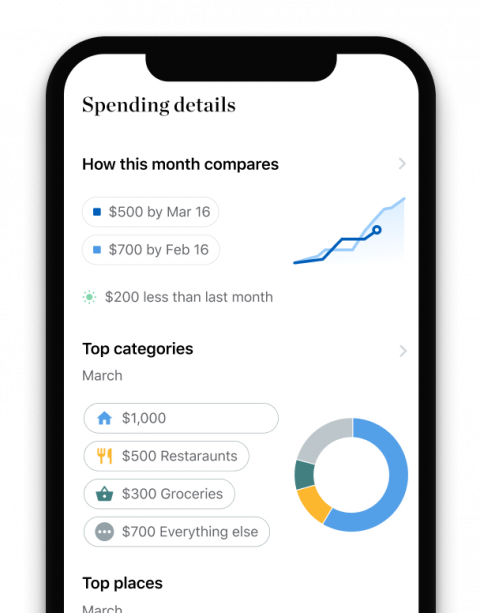Q&A: The New Student Loan Income-Driven Repayment Account Adjustment

Many or all of the products featured here are from our partners who compensate us. This influences which products we write about and where and how the product appears on a page. However, this does not influence our evaluations. Our opinions are our own. Here is a list of our partners and here's how we make money.
As of April 12, more than 996,000 longtime borrowers have qualified for roughly $49.2 billion in student loan forgiveness. It's the result of an automatic IDR account adjustment, previously called the "IDR waiver," announced by the Biden administration in April 2022. Under this one-time program, the U.S. Department of Education is reconsidering what counts toward income-driven repayment (IDR) forgiveness.
By the end of 2024, the program will bring millions of borrowers closer to student loan forgiveness or wipe their balances away entirely.
IDR plans offer reduced payments over 20 or 25 years, depending on loan type, then forgive the remaining balance. The program was created in the 1990s to protect borrowers from financial hardship; payments are based on the borrowers’ income, not the balance owed.
This account adjustment bends the rules on which payments count towards IDR forgiveness, so a great number of months you've ever spent in student loan repayment or on pause since leaving school will count toward forgiveness after the adjustment is applied — even if you've never enrolled in an IDR plan before.
It also applies to borrowers who qualify for Public Service Loan Forgiveness (PSLF), which erases remaining loan balances after just 10 years of payments.
Powered by
Has the account adjustment started?
Yes.
Starting in the spring of 2023, PSLF borrowers with older loans began to see their remaining balances erased.
The latest round of relief was announced on April 12, 2024: 65,800 borrowers got $3.5 billion worth of loan forgiveness.
Wave of relief are scheduled to continue through 2024. After the forgiveness is doled out to longtime borrowers, payment count adjustments will hit the accounts of all other eligible borrowers.
Do I have to do anything?
The recount is automatic for most. But certain borrowers may still have to act:
Borrowers with commercially-held federal loans must consolidate. To benefit from the recount, borrowers must have direct loans. That means borrowers with commercially-held FFELP, Perkins or Health Education Assistance Loan (HEAL) Program loans must consolidate them into a federal direct loan by April 30, 2024 to be included.
Public Service Loan Forgiveness-seeking borrowers must apply for PSLF. Borrowers who work in public service must submit an employment certification form and PSLF application in order to see the adjustment count toward PSLF. If they have payments remaining after the review, they’ll need to enroll in an IDR plan.
Some borrowers may need to enroll in IDR. Federal borrowers whose debts are not wiped clean will see their past payments reviewed by the end of 2024. Borrowers must enroll in an IDR plan to take advantage of the recount and continue to build credit towards IDR forgiveness. Payments they make after the account adjustment won’t count toward forgiveness if they don’t enroll.
Why is the IDR account adjustment happening?
The account adjustment is meant to address past missteps in the IDR and PSLF programs, including student loan servicers miscounting payments and needlessly putting borrowers into forbearances, which pauses payments but allows interest to rack up.
As a result of these errors, forgiveness through older IDR plans has been notoriously tricky. As of March 2021, only 32 borrowers had ever seen their debt forgiven despite decades of payments, according to a joint study from the National Consumer Law Center and the Student Borrower Protection Center.
What will count toward IDR forgiveness?
The IDR account adjustment will result in loan discharges for:
Borrowers who have made 20 or 25 years of payments (240 and 300 monthly payments, respectively), under any payment plan.
Borrowers who have submitted a PSLF application and who reach 120 payments as a result of changes to deferment qualifications outlined below.
If you’re unsure if this applies to you, here’s what counts as a qualifying past payment under the one-time review, through August 2023:
Any month a borrower was in repayment, even if the payments were late or partial. The type of repayment plan doesn’t matter.
Time spent in forbearance, either periods lasting 12 or more consecutive months or a cumulative 36 or more months.
Any month spent in deferment, other than in-school deferment, before 2013.
Any month spent in economic hardship or military deferments in 2013 or later.
Any months in repayment, forbearance or a qualifying deferment before a loan consolidation.
Any months spent in COVID-19-related forbearance.
Through June 2024, the Education Department will automatically apply the above payment count rules to all federal direct and government-owned Federal Family Education Loan Program loans. Those with commercially held FFELP loans must consolidate their debt into a new direct loan by the end of April 2024 in order to have past payments counted.
Will parent PLUS loans qualify?
Parent PLUS loans are eligible for both the IDR recount and the PSLF component.
If you hold parent PLUS loans that could be eligible for PSLF, you should update your employment certification history to reflect all periods of public service employment.
To qualify for PSLF, the parent who originally took out the parent PLUS loan must work in a qualifying public service job. It doesn't matter if the student or other parent holds a qualifying job.
Will my servicer know if I qualify?
It’s unlikely your servicer will have immediate information, because the Education Department is processing the payment recount. If you qualify for loan forgiveness under the IDR account adjustment, the Education Department will notify you via email before the forgiveness is processed. You’ll have a chance to opt out of the forgiveness at that point.
If you want to estimate how many months of IDR credit you could get, you’ll have to do some digging yourself. Log in to your Federal Student Aid account at StudentAid.gov to see what types of loans you have and how long you’ve been in repayment. For details, including payment history and descriptions of specific forbearance or deferment periods, request your account history from your servicer.
Your servicer will notify you directly once the forgiveness is processed.
What if I had delinquencies or a student loan in default?
These income-driven repayment plan fixes will not apply toward forgiveness for borrowers with loans currently in delinquency or default, according to the Education Department.
However, as part of the Education Department's “Fresh Start” program, which is available through at least September 2024, borrowers with delinquent or defaulted student loan debt can return to good standing when payments restart.
Past months spent in default generally won’t count towards the IDR account adjustment, but borrowers who get out of default before the Fresh Start program ends will get IDR credit for any months spent in default from March 2020 until the month they exit default.
“After the Fresh Start period, only borrowers who rehabilitate to leave default will benefit from the adjustment, but they will not receive credit for periods in default during the payment pause,” the Education Department writes.
Can I get a refund?
If you get your loan balance forgiven under the IDR account adjustment, it’s possible that you actually overpaid. In most cases, you’ll get a student loan refund for any overpayments beyond 20 or 25 years.
The extra payments made on forgiven loans will be refunded back to the most recent of these three dates:
The date you reached the required number of payments for IDR forgiveness — 20 or 25 years of monthly bills.
The date when the Department of Education acquired your loan.
The disbursement date of your consolidation loan.
Your servicer will notify you if the IDR account adjustment will erase your remaining loan balance. If you qualify for a refund, expect to receive it within about two months of the loan forgiveness.



